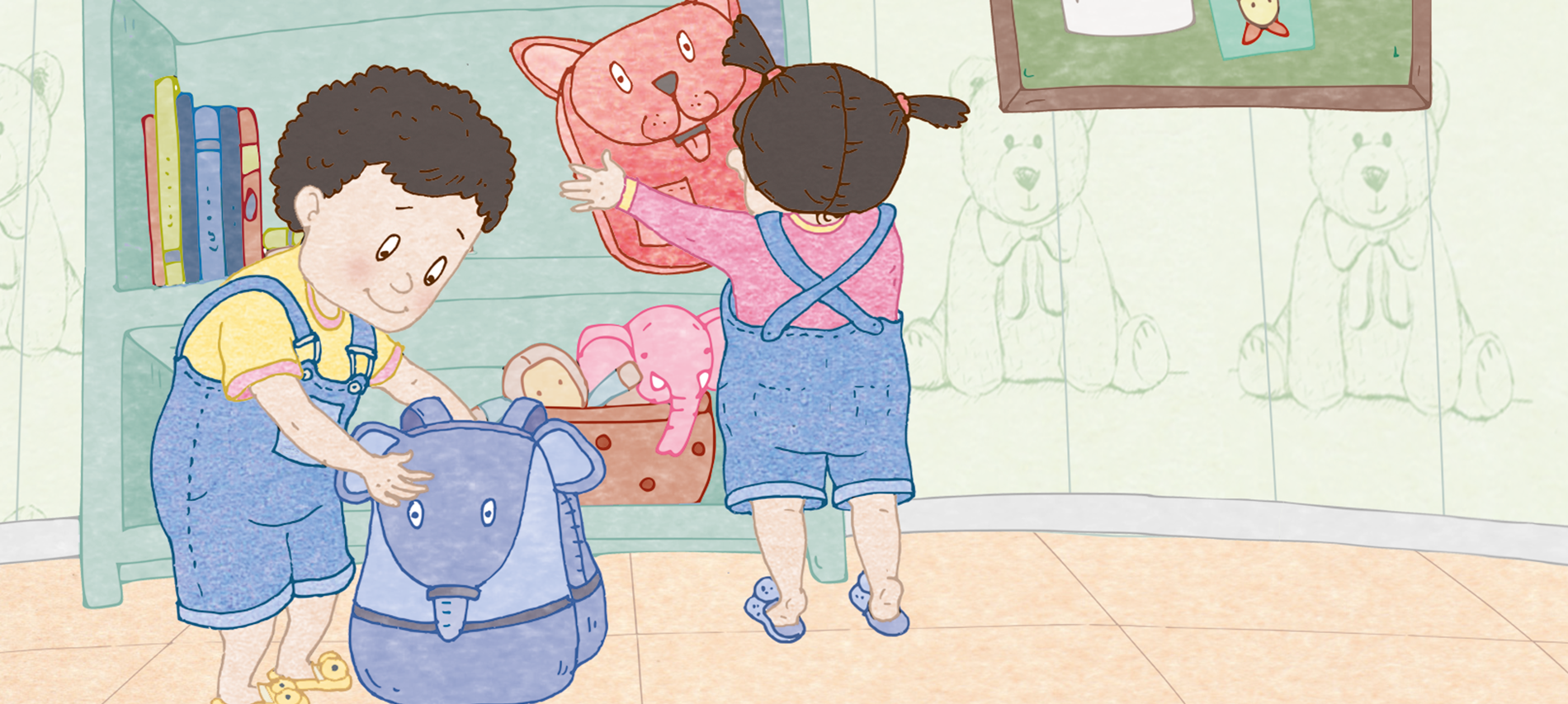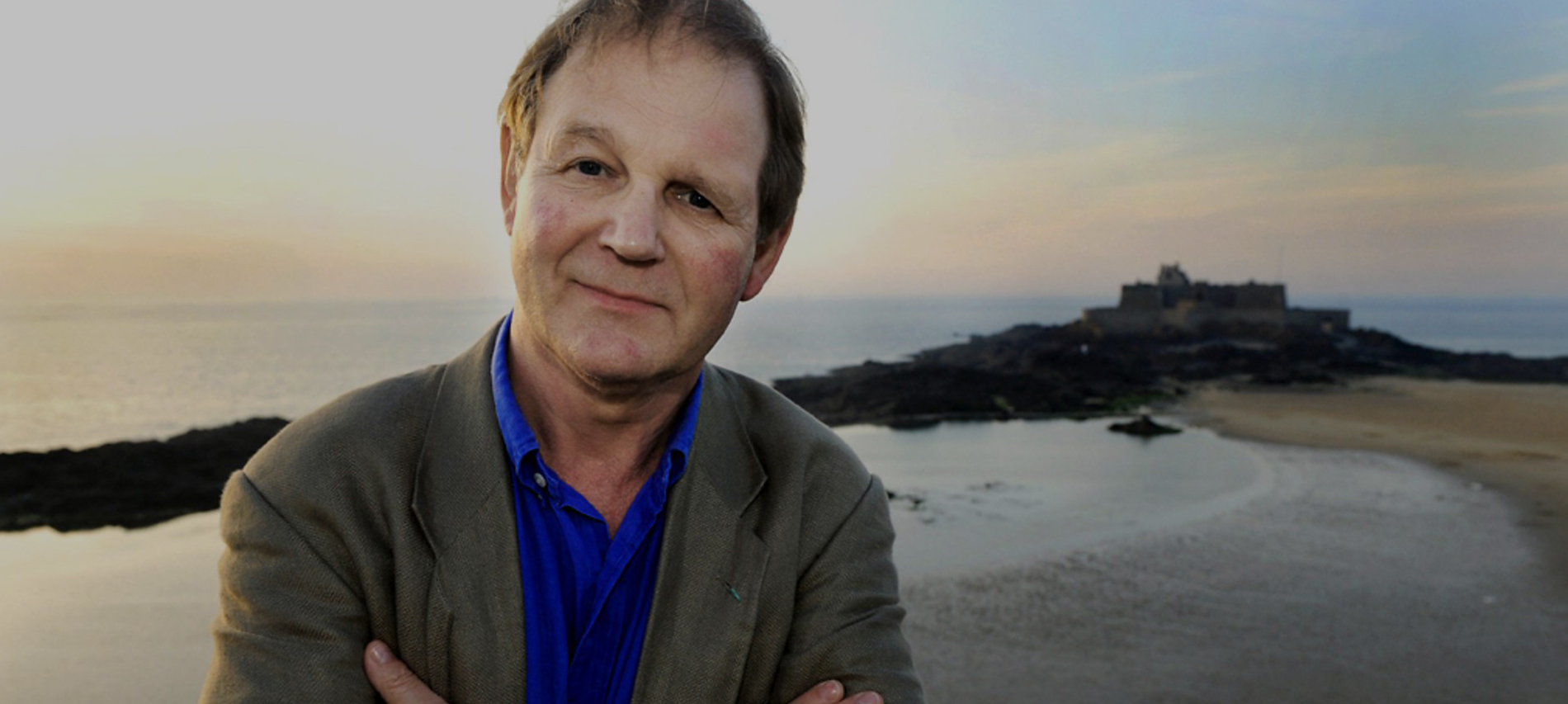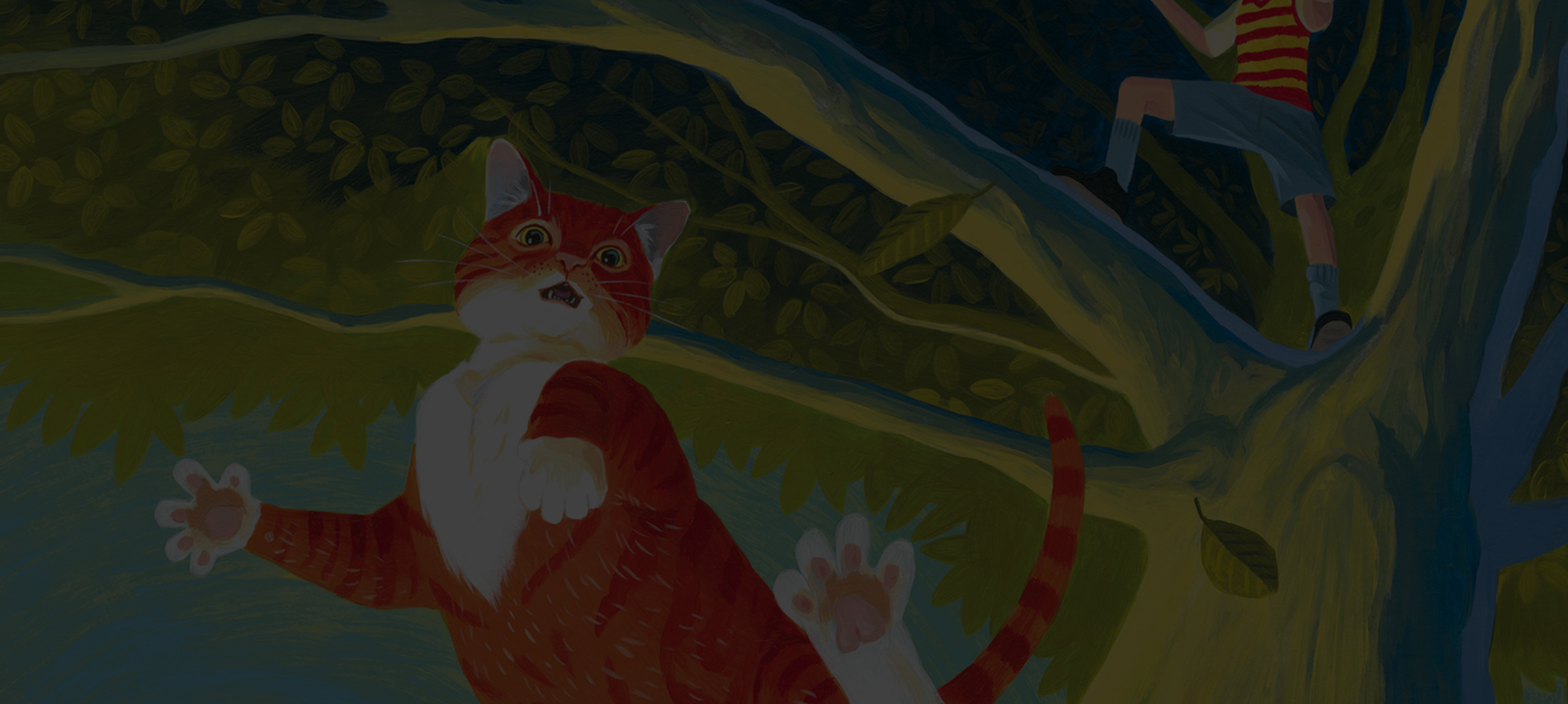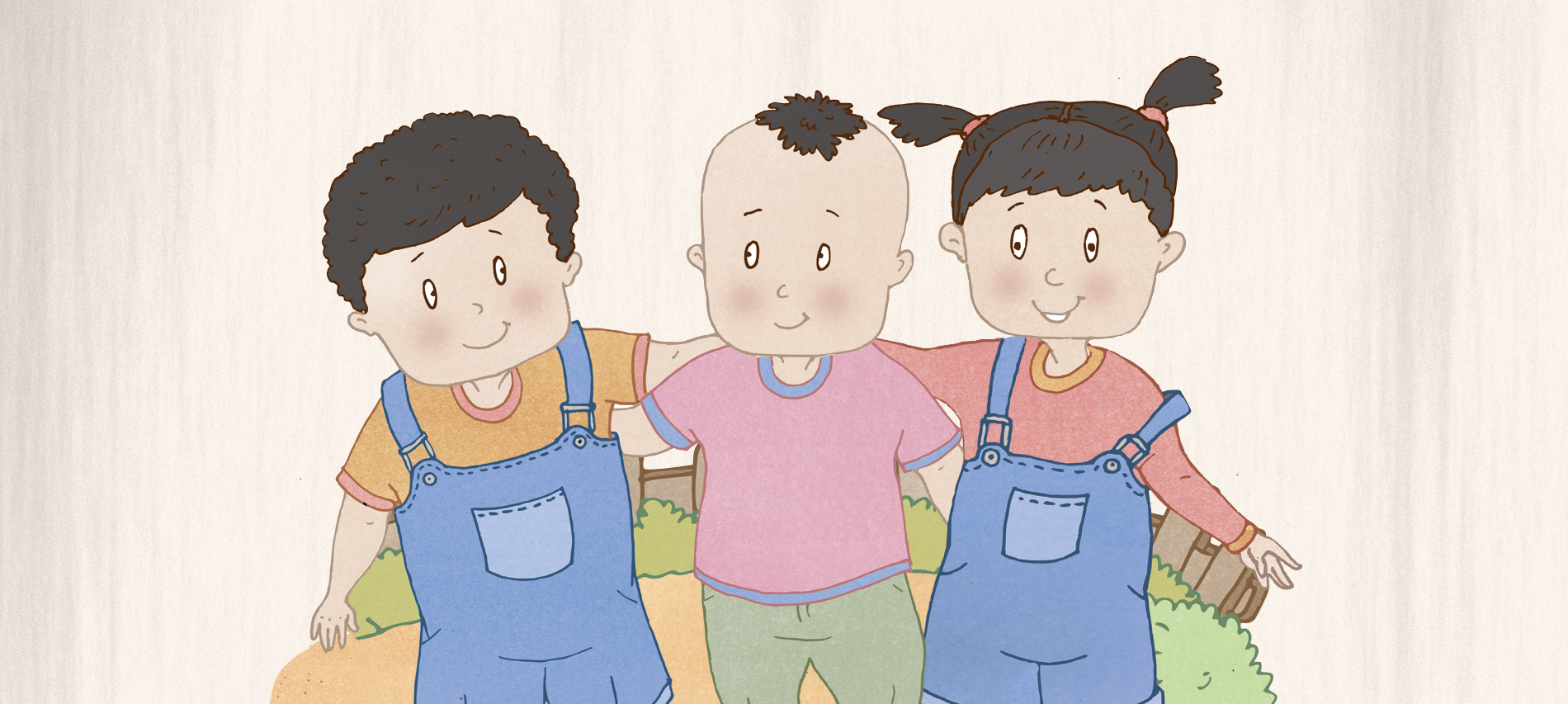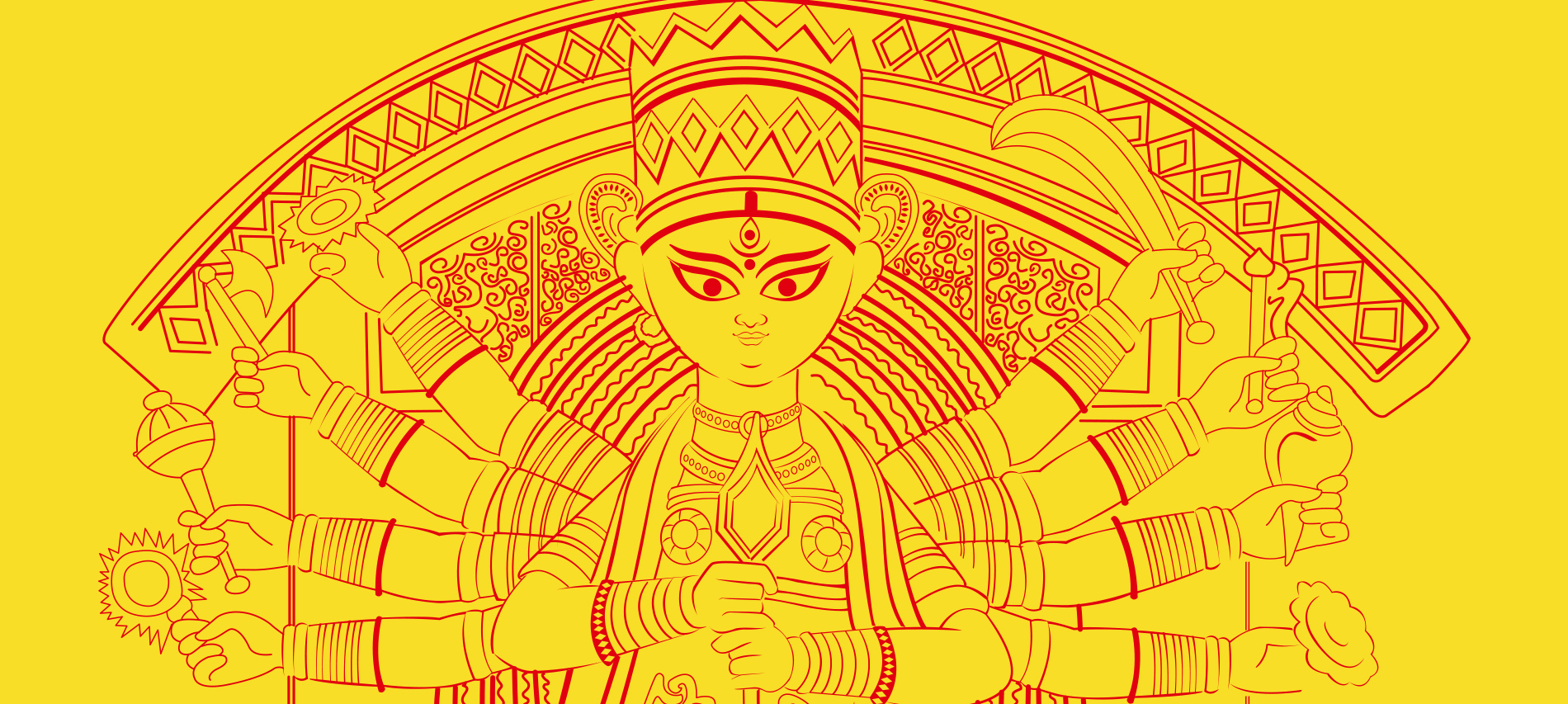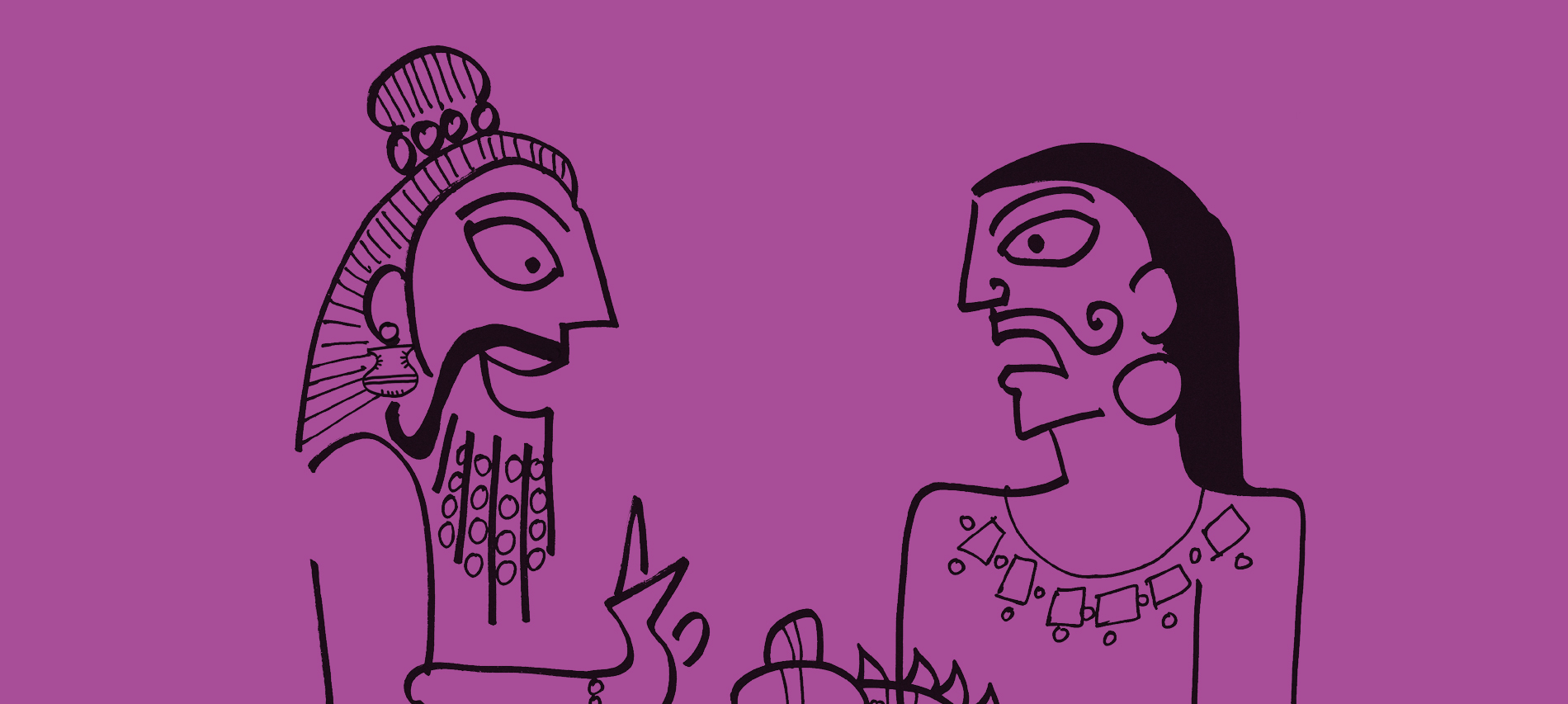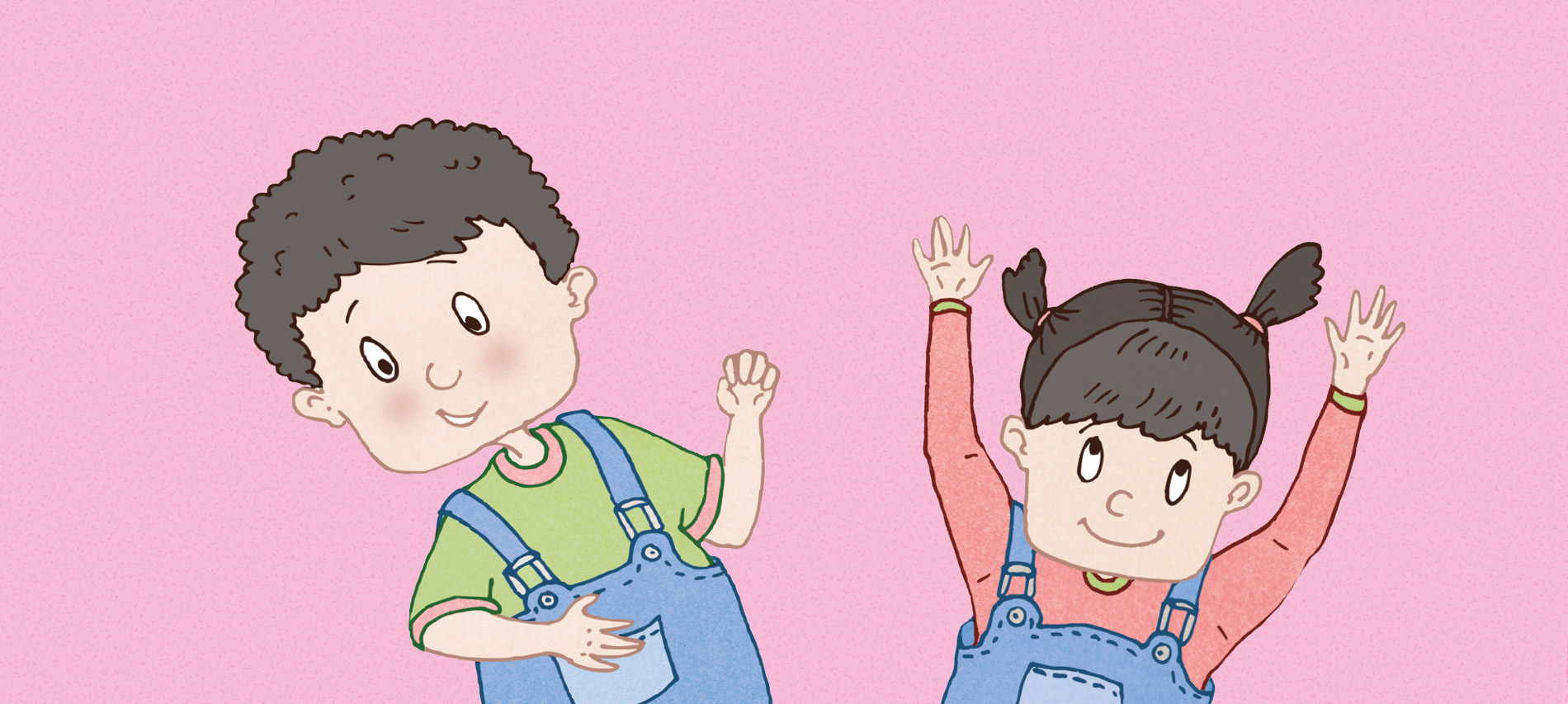Sonia Mehta’s super cool twins, Nicky and Noni, are in some trouble again! This time over sharing a tub of popcorn.
From her newest series — My Book of Values, Sonia Mehta explores how totally cool it is to instill and nurture some important values in children from an early age. While value education classes might be preachy, boring even, Sonia Mehta’s books make it fun for one and all, especially for your little one.
In Sharing is Cool, Sonia Mehta lets Nicky and Noni show us why indeed it is cool to share. How? Let’s find out!




That fight over the popcorn seems far from over! Do you think Nicky and Noni make peace finally? Grab a copy for your child today and find out!

Tag: Puffin
The Story of Mahatma Gandhi And Where It All Began: ‘Junior Lives: Mahatma Gandhi’ — An Excerpt
Mahatma Gandhi, lovingly called Gandhiji and the Father of the Nation, has been remembered by the entire world for his honest, non-violent methods of leading a nation to independence.
In Sonia Mehta’s ‘Junior Lives: Mahatma Gandhi’, the author explores the life of Gandhiji from his childhood and shows us how he became the leader that he is today.
Here’s a short excerpt from the book.
The thirteen-year-old lad was impatient. He wanted to get back to his friends, who were having a great time playing outdoors. But here he was—stuck indoors, made to dress up in clothes that were icky and uncomfortable.
‘Can I go now?’ he asked his mother, trying to shrug off the elaborate outfit she was trying to get him to wear.
‘No, Mohan,’ she replied. ‘You can’t go play with your friends today. It’s your wedding day.’
That young boy was Mohandas Karamchand Gandhi. At thirteen years of age, he was about to get married to a girl who was just a little older than he was. His family would never have believed it then, but this boy was to grow up to become one of the world’s greatest leaders, who would lead India to freedom. He showed people a nonviolent way of life. Millions of people adored him and gave him titles like Father of the Nation, Bapu (meaning father) and Mahatma (meaning great soul). What an incredible achievement for such an ordinary boy, born to such ordinary parents!
A Happy Family
Young Mohan (for that was what his family called him) was born to Karamchand and Putlibai on 2 October 1869. Theirs was a large, happy family. Mohan had a sister and two brothers—all older than him, so you can imagine how much he was loved and petted. The family was quite wealthy and lived in a big, three-storeyed house in the Indian port-city of Porbandar, in what is now Gujarat. Karamchand was an educated man. The ruler of Rajkot admired him and made him the diwan of Porbandar. As diwan, he managed the business of the state. People respected Karamchand a lot and came to him for advice.
When Mohan was a young boy, he was very shy. He would spend all his time with his books. This made him very thoughtful. However, he didn’t love studies; in fact, he found maths rather hard. But he was a good student overall, and his teachers thought well of him. One day, Mohan got his father’s permission to see a play about a king named Raja Harishchandra. The special thing about this king was that he never lied, no matter what happened to him. Mohan was so impressed by this play that he swore to never tell a lie in his life.
Always, Always Truthful
One morning, Mohan’s class was given a spelling test. Mohan knew all the spellings, except that of ‘kettle’. The English teacher, keen to prove that he was a good teacher, wanted all his students to know every spelling so that he could impress his superiors. When he saw that Mohan was unsure, he prodded him to peep at his neighbour’s slate and see the spelling.
‘But that would be cheating,’ an aghast Mohan thought. He refused to look at his neighbour’s slate, and eventually was the only boy in class who did not get all his spellings right. But that didn’t bother him. He was more bothered that his teacher had told him to cheat.
One of the only times Mohan lied was when he was in his early teens. He stole some gold from his brother and sold it. But it wasn’t for himself. He gave the money to his other brother to help him get out of debt. He couldn’t sleep that night. He tossed and turned, feeling awful. Finally, he confessed to his father. He was ready for any punishment. But instead of getting upset, Mohan’s father wept. He was hurt that his son had lied, but happy he had confessed.
Mahatma Gandhi’s fascinating life goes way beyond the years documented in the pages of history. Get to know Mohandas Karamchand Gandhi before he became GandhiJi with Sonia Mehta’s ‘Junior Lives: Mahatma Gandhi’!

Did You Know These Facts About Writer Michael Morpurgo?
Author Michael Morpurgo is best known for his children’s work War Horse that was released in the year 1982.
With a series of books that explore well-known stories from myths and epics, but with a magical twist, Morpurgo’s writings have been termed as “magical storytelling”.
With multiple literary awards to his name, Michael Morpurgo has written a wide range of fascinating books for children in a literary career spanning over decades.
Here are a few facts you may not have known about this amazing writer!





We bet you can’t wait to grab your copies of Michael Morpurgo’s amazing books after reading this. Don’t forget to tell us which ones you liked best!
(Author image credit: https://ichef.bbci.co.uk/images/ic/1920×1080/p01gzy0x.jpg)
‘This is no ordinary cat’: The Nine Lives of Montezuma — An Excerpt
As the famous saying in English tells us every cat has nine lives, Michael Morpurgo’s The Nine Lives of Motenzuma proves that cats indeed are survivors in this big, bad world.
Montezuma, a ginger cat, is anything but your ordinary furry friend. As soon as he is discovered, the characters in the story realise that this cat is not a normal alley cat but a creature with magical powers, much like its namesake, the survivor King of the Aztec.
Here’s a short excerpt from the book.
He found Montezuma crouching at the end of a long tapering branch that hung out over the pond. The branch looked thick enough and safe enough near the trunk, but the further away it stretched the more fragile it looked. Matthew stood in the fork of the tree and considered all the alternatives, trying to ignore the warnings and advice from below. He could not climb out along the branch to Monty – the branch would not take his weight. He needed a net to throw out over the cat, but there was no-one who could bring a net up to him – neither his father nor his mother could climb trees – at least he had never seen them. He would have to talk the kitten back to safety, that was the only way.
‘Monty,’ he said in as soothing a tone as he could manage. ‘It’s me, Monty. You can’t stay out there all day. You’ll be all right now. I’ll take you down. Come on then, come on. I won’t hurt you.’
But the kitten crouched low, glued to the branch like lichen. He blinked back at Matthew, swallowing hard and mewing weakly every so often. Matthew talked on in a consoling, sympathetic tone; but he received no encouragement from Montezuma who never moved a muscle.
From down below his father was shouting up to him. ‘Can’t you get him down?’ A question which Matthew didn’t feel he could answer politely.
‘Fire Brigade,’ his mother shouted up. ‘What about the Fire Brigade?’ They looked so small down there in the yard. Matthew felt his parents had been getting smaller in recent years, but he had never seen them this small.
‘Not yet,’ Matthew shouted back. ‘Not yet. I’ll try one more thing.’
‘Do be careful, dear. Do be careful.’ His mother’s voice sounded hysterical, but then it always did whenever she shouted.
Matthew held onto the branch above him and edged out onto Montezuma’s branch, stepping sideways like a cautious crab. The two branches ran parallel for a few yards and then the upper one that Matthew was holding onto came to an abrupt halt. Matthew went as far as he could and then released the upper branch. For a moment he stood balancing with nothing to hold onto. The branch swayed underneath him and he lowered himself carefully until he was sitting astride the branch, his hands clasping it firmly in front of him. Like this he pulled himself along inch by inch until he knew he could go no further. The kitten was still well out of reach.
‘That’s far enough.’ His father’s shout was sharp. ‘No further. That’s far enough. The branch won’t take the weight. No further.’
Matthew knew he was right, but he was nearly there and it was only a few more feet. He lay now flat along the branch gripping behind with his feet, his hands holding on in front of him. ‘Come on Monty, come on down. Please, there’s a good kitten. Come on now.’ But as he released one hand to reach out towards the cat, he lost his balance and had to grab at the branch suddenly to retrieve himself. Alarmed, the kitten backed away, lost his grip and tumbled down through the air towards the pond. Matthew watched for the splash and saw his father running down across the yard towards the pond. The ducks evacuated the pond noisily, leaving Matthew’s father alone in the pond striding waist deep to the spot where Montezuma had fallen in. Matthew waited, closed his eyes and prayed. When he opened them his father was shouting up at him and laughing, holding up a dripping kitten. ‘Got him. He’s all right. The little divil’s still breathing.’
By the time Matthew had made the descent, his father was out of the pond and had pulled off his shoes. He was sitting on the ground taking his socks off and wringing out the water. ‘Your father will catch his death,’ said Matthew’s mother, who was holding on to Montezuma in a vice-like grip. ‘Here’s your Monty,’ she said. ‘You take him. And for God’s sake hang on to him. You worry me to death, you two. First you go climbing up trees and then he goes jumping into cold ponds – at his age. You should know better. Could have killed you both and all for what? For a kitten.’
‘For Monty,’ said Matthew, rubbing the kitten dry with the tail of his shirt. ‘This is no ordinary cat, you know. Can you imagine my Dad jumping into a pond to rescue any other cat? He’s dropped plenty of kittens into this pond, but this is the first one he’s ever pulled out and that’s a fact.’
‘And the last,’ said his father wriggling his wet toes. ‘Definitely the last.’
Find out which adventure Montezuma encounters next in this enchanting book by Michael Morpurgo!

How To Transform Society Dr APJ Abdul Kalam Way: ‘Mission India’ — An Excerpt
Dr.APJ Abdul Kalam’s benevolence and goodwill towards society is no news to us. The late President of India was a beautiful boon that mankind witnessed. His ‘Mission India : A Vision for Indian Youth’ addresses the youth in their endeavour to contribute to the nation’s progress. The book also plays an important role in that it tells every individual and organisation how they can shape and transform the nation by 2020.
Read the excerpt below to remember this amazing soul!
If you think about the development of human civilization, you will find that the pace of social and economic growth has been closely related to the proficiency with which people have been able to use the materials and chemicals in the world around them. In the beginning, this was through keen observation and trial and error. Thousands of years ago, men and women discovered, perhaps by accident, that they could hunt more easily if they sharpened rocks into weapons. They discovered that certain herbs helped to heal wounds. Once they discovered these properties of the materials around them, they remembered these and started using them. Their knowledge of these few things was slowly extended to others. As more and more knowledge was accumulated, human civilization as we know it today developed. Think about all the things you take for granted, as a normal part of life. Do you know it was only about two hundred
years ago that man started using coal and oil as energy sources to run machinery? The railways were invented. As a result, man could transport raw materials from far away to create new products and also sell them in distant places. It thus became very easy for goods to be transported, made easier still by the advent of the automobile and the aeroplane. Today, you can talk to people across the world from wherever you are—home, office, on a bus. But mobile phones were commercially available only from 1987. The first mobiles were available in India from 1994–95—and there were over 10 million users by 2002! Even something which seems as simple as a matchbox was only invented in the late nineteenth century—less than 120 years ago. Imagine how difficult it was to light a fire before that! Some ten years ago, the Internet became widely used. A vast world of information became available on the computer at the click of a mouse. As a result, knowledge flows so much easier. Sitting at your desk in India, you can find out about events and technologies all over the world. When I was writing this book, it was so much quicker for me to check the facts.
Ten years ago, it would have taken me ten times as long to write it, as I would have to go to many libraries and talk to many different people to get the same amount of information. The creation of so much technology is dependent on the creation of the advanced materials which are used to create computers, fibre optic cables, scanners and printers. Just imagine then, how different the world can be a hundred years from now! At the present rate of growth, in twenty years we can have trains that will travel from Delhi to Mumbai in a few hours—there is talk already of trains that can move as fast as planes using electromagnetic technology, robots in every home that can do the housework, and computers that will write down your homework as you talk! In this exciting world of rapid change, you have many wonderful opportunities to change the world and change India, if you can think out of the box and work with technology!
There are so many new materials available nowadays which our grandparents did not have access to. Our houses are full of modern materials: stainless steel, fibre glass, plastics, musical
and audio-visual materials. In the world outside, there are so many new materials as well: lightweight, high-performance alloys help us build aircraft, satellites, launch vehicles and
missiles and various kinds of plastics. Think of all the things in your daily life which are made of plastic—and imagine a world without them. The better use a country can make of its materials and chemicals, the more prosperous it will be. These new materials can also help in making life easier in ways that were not thought of when they were being invented. The DRDO has developed at least fifteen promising life science spin-off technologies from what were originally defence projects, some of them missile programmes.
You must have heard of Agni, India’s indigenously produced intermediate-range ballistic missile, first test-fired in May 1989. For Agni, we at the Defence Research and Development Organization (DRDO) developed a new, very light material called carbon-carbon. One day, an orthopaedic surgeon from the Nizam Institute of Medical Sciences in Hyderabad visited my laboratory. He lifted the material and found it so light that he took me to his hospital and showed me his patients—little girls and boys who had polio or other problems, as a result of which their legs could not function properly. The doctors helped them to walk in the only way they could—by fitting heavy metallic callipers on their legs. Each calliper weighed over 3 kg, and so the children walked with great difficulty, dragging their feet around. The doctor who had taken me there said to me, ‘Please remove the pain of my patients.’ In three weeks, we made these Floor Reaction Orthosis 300-gram callipers and took them to the orthopaedic centre. The children could not believe their eyes! From dragging around a 3-kg load on their legs, they could now move around freely with these 300-gram callipers. They began running around! Their parents had tears in their eyes. An ex-serviceman from a middle-class family in Karnataka wrote to us, after reading about how we had assisted polio-affected children. He inquired if something could be done for his twelve-year-old daughter who was suffering from residual polio of the leg and was forced to drag herself with a 4.5-kg calliper made out of wood, leather and metallic strips. Our scientists invited the father and daughter to our laboratory in Hyderabad, and together with the orthopaedic doctors at the Nizam’s Institute of Medical Sciences, designed a Knee Ankle Foot Orthosis weighing merely 400 grams. The girl’s walking almost returned to normal using this. The parents wrote to us a couple of months later that the girl had learned cycling and started going to school on her own.
Dr.Kalam contributed immensely to development of the nation. Purchase your copy to read more on the man and his extraordinary talent and achievement in the field of science, education, society and so on.

There’s a New Boy In Nicky and Noni’s Class! Do They Become Friends? — ‘Being a Good Friend Is Cool’: An Excerpt
In Sonia Mehta’s Being a Good Friend Is Cool from her new series of books — My Book of Values, the author talks about the cool value of being a good friend.
Nicky and Noni have a new boy in class, but Nicky seems to be doing something wrong. What is it? Let’s find out!




What do Nicky and Noni do next? Do they become friends with Jojo? Grab a copy of Being a Good Friend is Cool to find out!

What Do Nicky and Noni Do When They Visit Their Grandparents?: ‘It’s Cool to Respect Others’ — An Excerpt
In Sonia Mehta’s It’s Cool to Respect Others from her new series of books — My Book of Values, the author reminds us as to why having some values in life is totally cool!
Nicky and Noni do not seem to be too enthusiastic about visiting their grandparents. Why? What uncool things do they do which no one approves of? Let’s find out!




Do Nicky and Noni realise their mistake? Find out with It’s Cool to Respect Others!

Just Before We Set Off For Earth — 'Earthward Bound'
As one recovers from the heavy hearts left behind after a brilliant week of Durga Puja fun and festivities, here’s a little throwback with a short story, ‘Earthward Bound’, by writer Nayanika Mahtani, on what happens in Goddess Durga’s household just before she descends on earth with her children, ushering in a joyful autumn!
‘Come on kids, get ready – we’re off on a little journey,’ said Goddess Durga. Her four children Lakshmi, Saraswati, Kartikeya and Ganesha were busy having a snowball fight in the mountains of Kailash.
‘Where are we headed, Ma?’ asked Ganesha.
‘To Earth of course, silly!’ said Saraswati.
‘Have you forgotten – we go every year when Ma is invited by her devotees?’ said Lakshmi.
‘I knew that – obvio!’ mumbled Ganesha.
‘Yup, he would never forget the sweets at Puja,’ piped in Kartikeya.
‘Could you four please stop squabbling – we need to get there in time!’ said Ma Durga. ‘Oh, quick check – have I taken everything?’
‘Hmm, let’s see Ma,’ said Saraswati. ‘Have you got Vishnu’s discus, Shiva’s trident, Varuna’s conch and noose, Agni’s flaming dart, Vayu’s bow, Surya’s quiver full of arrows, Yama’s sword and shield, Vishwakarma’s axe and armour and Indra’s thunderbolt?’
‘Whoa! That’s quite a handful – good thing you have so many hands, Ma!’ said Ganesha. ‘How come you get to keep all the weapons that the Gods gave you to fight Mahishasur – even though he is now long dead?’
‘Well, Mahishasur may be dead but evil lives on, Ganesha – and I always need to be ready to fight evil,’ replied Ma Durga.
‘Will we be riding on the lion given to you by Himavat?’ asked Lakshmi.
‘Of course!’ said Ma Durga. ‘Now as you know the Devi Paksha rituals start from Mahalaya, when we begin our journey to Earth. Who remembers what Mahalaya means?’
‘Ahem, I do!’ said Kartikeya, casting a sideways glance at Ganesha. ‘“Maha” means ‘big’, and “laya”, means ‘destruction’. It refers to the colossal war between the Devtas, Rishis and Asuras – where many Devtas and Rishis died at the hands of the Asuras. People on Earth consider Devtas and Rishis to be their forefathers. That’s why the ritual of Tarpan or Shraddh happens on Mahalaya, when prayers are offered in remembrance.’
‘Bah! Such a show-off!’ muttered Ganesha, whose mind was now feasting on the soon-to-be-had sandesh and laddoos.
‘Though the actual Puja starts from the sixth day, the Shashthi, when we five arrive on Earth,’ added Saraswati.
‘That’s right,’ said Ma Durga. ‘It begins with Bodhan, which marks the moment when I was given all the divine arms to rid the Earth of Mahishasur’s tyranny. On Shashti, my face is uncovered – to show that I have arrived on Earth. The next day is Saptami and it starts with a ritual called “Kola Bou”.’
“Ha ha! Kola Bou’s your wife, Ganesha!’ teased Lakshmi. ‘Such a pretty banana tree stalk, bathed and draped in a white sari with a red border and placed by your side!’
‘Tsk, don’t make him blush, Lakshmi!’ chided Ma Durga. ‘Actually it is not just a banana stalk that is bathed; nine plants are placed by my Ganesha after the bathing rituals. It’s called “Nabapatrika” puja – and these nine plants represent the nine forms of Shakti, of which you are one too, my Lakshmi.’
‘I feel a bit sidelined, to be honest,’ said Saraswati.
‘Come on! You get a day all to yourself to be worshipped,’ said Kartikeya.
‘Well, you get a day like that too, Kartikeya’ said Ma Durga. ‘Anyway, let’s not get sidetracked, kids! So then follows Ashtami which is considered the most auspicious day of Durga Puja – with its most significant ritual being the Sandhi Puja.’
‘Let me elaborate,’ said Kartikeya with a flourish. ‘Sandhikshan, when Sandhi Puja is done, falls between the last 24 minutes of Ashtami and the first 24 minutes of Navami. This is the exact time when the Asuras Chanda and Munda were slain by Ma.’
‘It for this reason I am also called Chamunda,’ said Ma Durga.
‘Aarrgh! Why doesn’t our family keep just one name for each of us?’ asked Ganesha. ‘I have such a hard time keeping track of all my names. It’s so tricky figuring out when I’m being called!’
Ma Durga smiled and carried on. ‘Then comes Dashami or Vijaya Dashami which is the day I killed Mahishasura – and freed the Earth of his torments. Vijaya Dashami is the last day of the puja.’
‘And it’s also when Ma’s idol is taken to a water body and immersed, denoting her journey back to Kailash,’ said Saraswati.
‘That’s right! Well done, all of you!’ said Ma Durga. ‘Now hold on tight – we’re about to take off!’
‘Have a safe journey, family,’ boomed a deep voice in the background. He watched Ma Durga and the children fly earthwards. Lord Shiva closed his eyes. ‘Ah! Now for some peace and quiet, finally.’
Would you like to look up what each of the weapons of Goddess Durga signifies? Hindu mythology is such a treasure trove – there’s always more than what meets the eye. Look for these treasures – you won’t be disappointed!
Note: Ganesha was of course just pretending to not know all the answers in this story, to rile his Mum and siblings. He in fact is quite the know-it-all. Though he can get distracted when sweets are involved. ☺
Nayanika Mahtani is a copywriter by day and a storyteller by night. She lives in London with her husband, two daughters and their two goldfish named Sushi and Fishfinger. Nayanika has published two books with Puffin, ‘Ambushed’ and ‘The Gory Story of Genghis Khan’.
The Simple Messages Hidden in ‘Mahabharata’: ‘The Boys Who Fought’
The story of Mahabharata has been retold countless times through generations and one instinctively comes to identify it with the great battle of Kurukshetra.
But going beyond all the animosity and rivalry that overarches the epic, Mahabharata espouses some important messages for life, an aspect Devdutt Pattanaik has brought forth for us in The Boys Who Fought.
Here are a few times we were reminded of the simple but impactful messages from the Mahabharata that transcend time and remain equally relevant even today.
When Vyasa wondered about the progress humankind had truly made.
When Ekalavya showed us the meaning of control, as opposed to destruction.

When we were reminded of the true meaning of ‘life’.

When we were told about the vicious cycles humankind gets trapped in.

Know more about the timeless messages of the Mahabharata with Devdutt Pattanaik’s beautifully illustrated book today!

Who Are Nicky and Noni and Why Should You Introduce Them To Your Children?
Meet Nicky and Noni — the uber cool twins from author Sonia Mehta’s new series of books for children — ‘My Book of Values’.
Like any kid, Nicky and Noni too love to engage in fun activities. But as kids, they get into trouble too.
Nicky and Noni now know that learning good values can be very cool. It can be fun, and super engaging!
Do you want to meet them?

Dear Moms and Dads,
Would you believe that your little one is already old enough to take small decisions by herself or himself? There will be a hundred tiny things that happen to them during the day, where they have to act in a certain way, take small calls and make their own judgement. This then is the right time to prepare and give them that sense of right and wrong that we all grew up with.
But it needs to be done subtly. Today’s child isn’t up to lectures and threats. This is the purpose of this series. Being able to differentiate right from wrong and good from bad, building a strong value system, learning to accept consequences—all through relatable stories and fun activities.
Nicky and Noni are typical twenty-first-century kids. Smart, communicative and alert, they know how to get their way. But as they go about their lives, they encounter situations and challenges during which their value system is tested.
Using Nicky and Noni as protagonists, and with activities that make your child think and apply certain concepts, the series highlights the importance of key values and how they make a difference in life.
We’ve tried to make the series fun and engaging while communicating a single message: that in today’s time, BEING GOOD IS COOL.
Find out what new lesson Nicky and Noni learnt today! Grab your copy of ‘My Book of Values’ by Sonia Mehta now!








